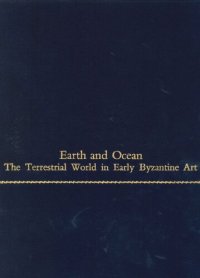
Ebook: Earth and ocean: the terrestrial world in early Byzantine art
Author: Henry Maguire
- Series: College Art Association Monographs
- Year: 1987
- Publisher: College Art Association
- Language: English
- pdf
One of the most distinctive characteristics of Byzantine art of the later fifth and the sixth centuries AD is its fondness for imagery drawn from natural history. Wherever the visitor looks in churches of this period, whether it be to the floors, the walls, the furnishing, or the ceilings and the vaults, there may be representations of birds, beasts, sea creatures, and plants. These motifs from nature raise complex questions of meaning and significance, but often the works of art do not in themselves provide clear answers to these questions, so that the modern viewer is unsure how to interpret them. The aim of this book is to draw on the great wealth of Early Christian literature on natural history incorporated into sermons and commentaries, and to show the connections between this exegetical literature and presentations of nature in art. By studying the parallels between art and literature it is possible to reveal the common patterns of thinking that may have inspired both artists (or their patrons) and writers.
Most of the works of art discussed in this book are floor mosaics, but also considered are portrayals of life of the earth and the ocean displayed on walls, vaults, and ceilings. The first of seven chapters contains an introductory discussion of the language of symbolism in early Byzantine art, especially with respect to portrayals of themes from nature. Each of the six subsequent chapters is devoted to a different interpretation of terrestrial nature, as seen both in art and in literature.
The second chapter is concerned with those writers and artists who interpreted the world created by God in an absolutely literal sense, reading no kind of symbolism or allegory into it, and the third chapter with those who interpreted most of Creation literally, but allegorized certain parts of it, so that they saw only some elements of natural history as Christian symbols. The next two chapters treat those who were willing to allegorize the world extensively, imposing elaborate superstructures of symbolic meaning onto the whole scheme of Creation. The sixth chapter is concerned with mosaics and commentaries which gave a moralistic purpose to their views of the earth, by portraying humanity's role in nature. Finally, the seventh chapter shows how portrayals of Earth and Ocean could also have had an imperial significance in early Byzantine art, in the decoration of churches as well as of palaces.